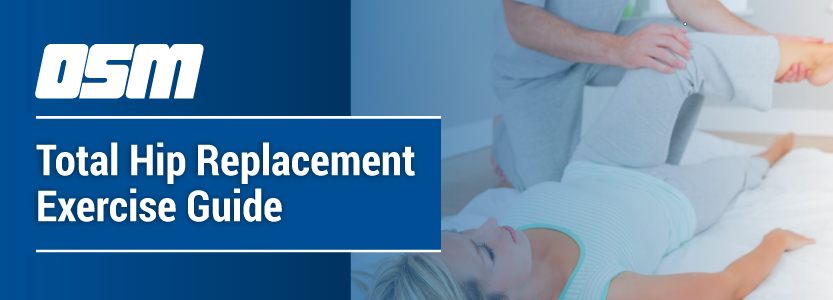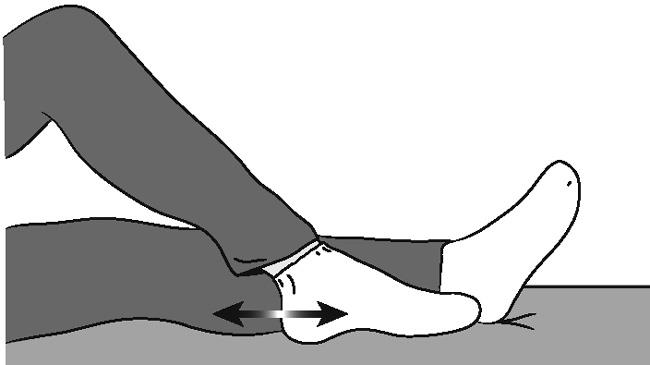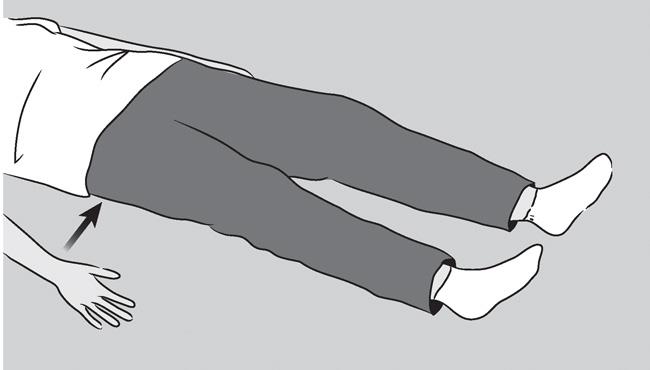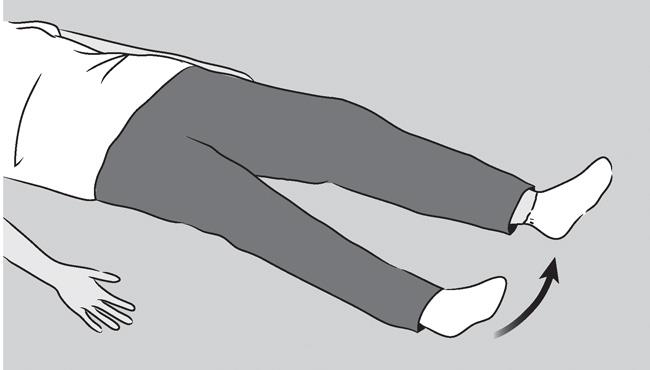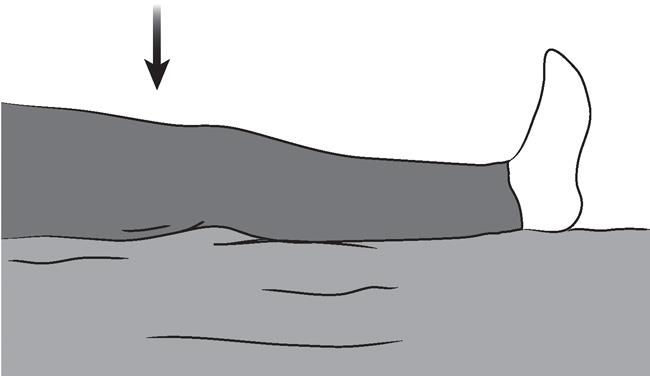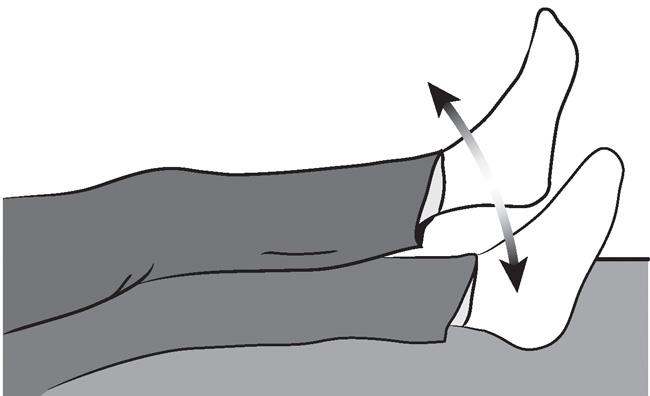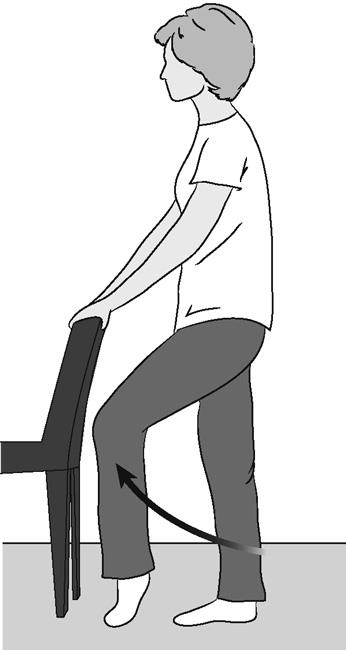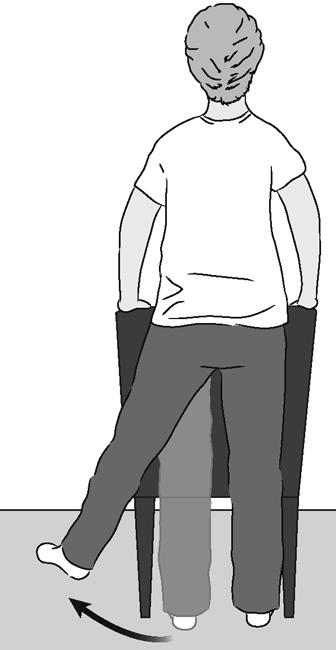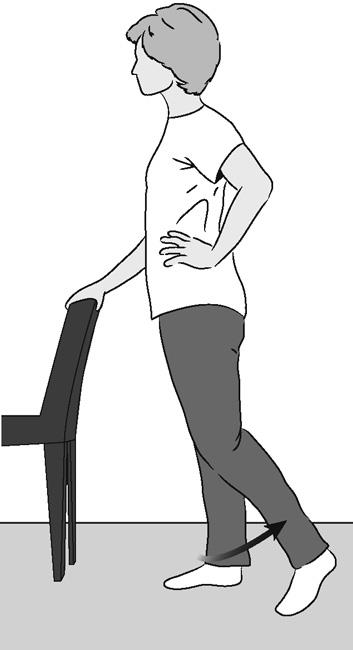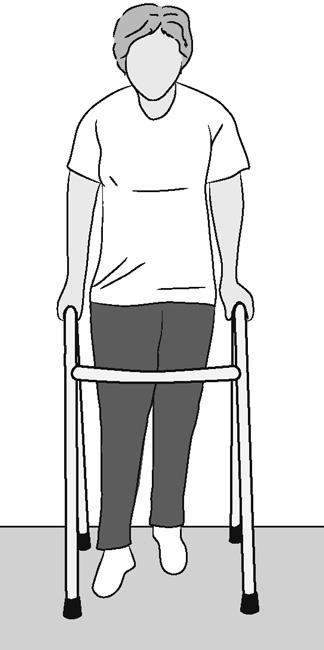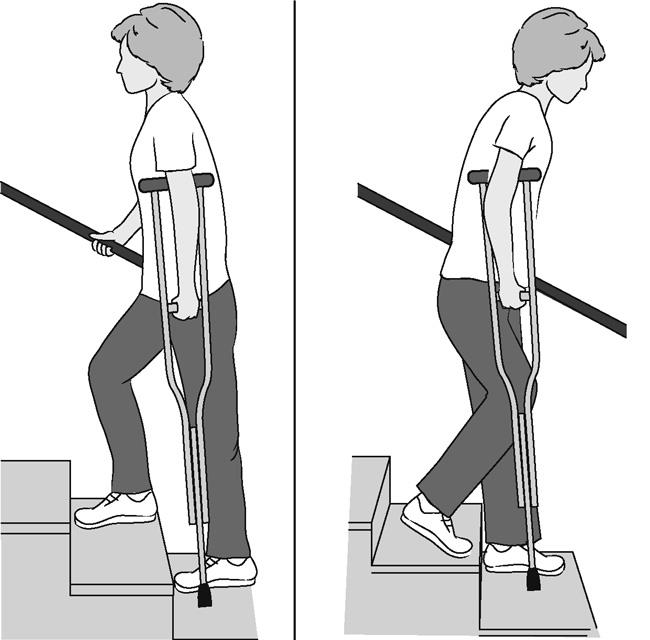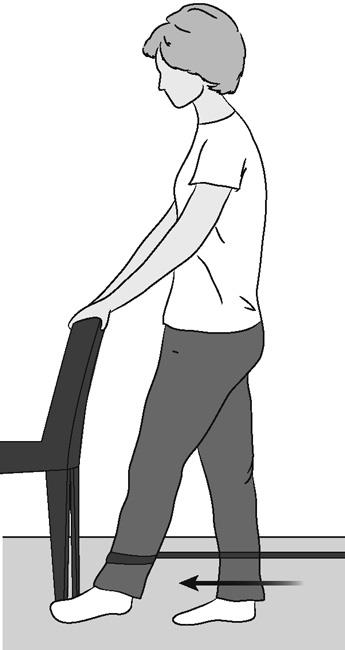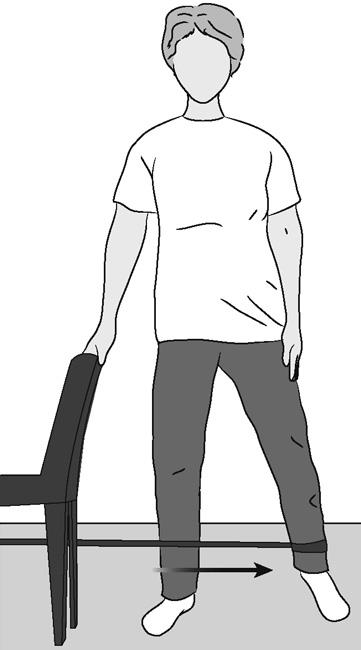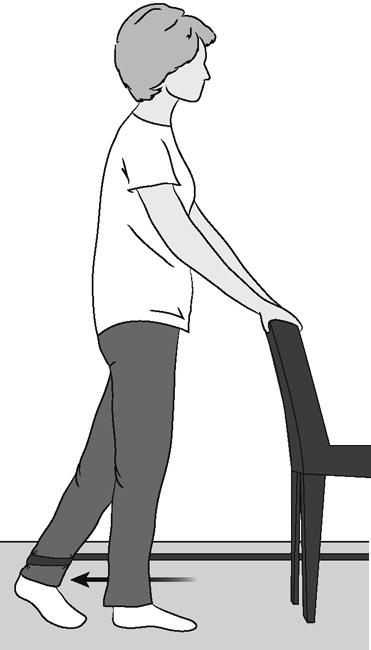Total Hip Replacement Exercise Guide
From OrthoInfo & the American Academy of Orthopaedic Surgeons
Regular exercise to restore strength and mobility to your hip and a gradual return to everyday
activities are important for your full recovery after hip replacement. Your orthopaedic surgeon
and physical therapist may recommend that you exercise for 20 to 30 minutes, 2 or 3 times a day
during your early recovery. They may suggest some of the exercises shown below.
This guide can help you better understand your exercise and activity program, supervised by
your physical therapist and orthopaedic surgeon. To ensure your safe recovery, be sure to check
with your therapist or surgeon before performing any of the exercises shown.
Early Postoperative Exercises
The following exercises will help increase circulation to your legs and feet, which is important
for preventing blood clots. They will also help strengthen your muscles and improve hip
movement.
Start the exercises as soon as you are able. You can begin them in the recovery room shortly
after surgery. You may feel uncomfortable at first, but these exercises will help speed your
recovery and actually diminish your postoperative pain.
Ankle Pumps
Slowly push your foot up and down. Repeat this exercise several times, as often as every 5 or 10
minutes. Begin this exercise immediately after surgery and continue it until you are fully recovered.
Ankle Rotations
Move your ankle inward toward your other foot and then outward away from your other foot.
Repeat 5 times in each direction.
Do 3 or 4 sessions a day.
Bed-Supported Knee Bends
Slide your foot toward your buttocks, bending your knee and keeping your heel on the bed. Do not let your knee roll inward. Hold your knee in a maximally bent position for 5 to 10 seconds and then straighten.
Repeat 10 times.
Do 3 or 4 sessions a day.
Buttock Contractions
Tighten your buttock muscles and hold to a count of 5.
Repeat 10 times.
Do 3 or 4 sessions a day.
Abduction Exercise
Slide your leg out to the side as far as you can and then back.
Repeat 10 times.
Do 3 or 4 sessions a day
Quadriceps Set
Tighten your thigh muscle. Try to straighten your knee. Hold for 5 to 10 seconds.
Repeat this exercise 10 times during a 10-minute period, rest one minute and repeat.
Continue until your thigh feels fatigued.
Straight Leg Raises
Tighten your thigh muscle with your knee fully straightened on the bed. Lift your leg several inches. Hold for 5 to 10 seconds. Slowly lower.
Repeat until your thigh feels fatigued.
Standing Exercises
Soon after your surgery, you will be out of bed and able to stand. You will require help at first but, as you regain your strength, you will be able to stand independently. While doing these standing exercises, make sure you are holding on to a firm surface such as a bar attached to your bed or a wall.
Standing Knee Raises
Lift your operated leg toward your chest. Do not lift your knee higher than your waist. Hold for 2 or 3 counts and put your leg down.
Repeat 10 times.
Do 3 or 4 sessions a day.
Standing Hip Abduction
Be sure your hip, knee and foot are pointing straight forward. Keep your body straight. With your knee straight, lift your leg out to the side. Slowly lower your leg so your foot is back on the floor.
Repeat 10 times.
Do 3 or 4 sessions a day.
Standing Hip Extensions
Lift your operated leg backward slowly. Try to keep your back straight. Hold for 2 or 3 counts. Return your foot to the floor.
Repeat 10 times.
Do 3 or 4 sessions a day.
Early Activity
Soon after surgery, you will begin to walk short distances in your hospital room and perform light everyday activities. This early activity aids your recovery and helps your hip regain its strength and movement.
Walking
Proper walking is the best way to help your hip recover. At first, you will walk with a walker or crutches. Your surgeon or therapist will tell you how much weight to put on your leg.
Stand comfortably and erect with your weight evenly balanced on your walker or crutches. Advance your walker or crutches a short distance; then reach forward with your operated leg with your knee straightened so the heel of your foot touches the floor first. As you move forward, your knee and ankle will bend and your entire foot will rest evenly on the floor. As you complete the step, your toe will lift off the floor and your and knee and hip will bend so that you can reach forward for your next step. Remember, touch your heel first, then flatten your foot, then lift your toes off the floor.
Stair Climbing and Descending
The ability to go up and down stairs requires both strength and flexibility. At first, you will need a handrail for support and will be able to go only one step at a time. Always lead up the stairs with your good leg and down the stairs with your operated leg. Remember, “up with the good” and “down with the bad.” You may want to have someone help you until you have regained most of your strength and mobility.
Stair climbing is an excellent strengthening and endurance activity. Do not try to climb steps higher than the standard height (7 inches) and always use a handrail for balance. As you become stronger and more mobile, you can begin to climb stairs foot over foot.
Advanced Exercises and Activities
The pain from your hip problems before your surgery and the pain and swelling after surgery have weakened your hip muscles. A full recovery will take many months. The following exercises and activities will help your hip muscles recover fully.
These exercises should be done in 10 repetitions, 4 times a day. Place one end of the tubing around the ankle of your operated leg and attach the opposite end of the tubing to a stationary object such as a locked door or heavy furniture. Hold on to a chair or bar for balance.
Elastic Tube Exercises
Resistive Hip Flexion
Stand with your feet slightly apart. Bring your operated leg forward keeping the knee straight. Allow your leg to return to its previous position.
Resistive Hip Abduction
Stand sideways from the door to which the tubing is attached and extend your operated leg out to the side. Allow your leg to return to its previous position.
Resistive Hip Extensions
Face the door to which the tubing is attached and pull your leg straight back. Allow your leg to return to its previous position.
Exercycling
Exercycling is an excellent activity to help you regain muscle strength and hip mobility.
At first, adjust the seat height so that the bottom of your foot just touches the pedal with your knee almost straight. Pedal backwards at first. Ride forward only after a comfortable cycling motion is possible backwards.
As you become stronger (at about 4 to 6 weeks) slowly increase the tension on the exercycle. Exercycle for 10 to 15 minutes twice a day, gradually building up to 20 to 30 minutes, 3 or 4 times a week.
Walking
Walk with a cane until you have regained your balance skills. In the beginning, walk for 5 or 10 minutes, 3 or 4 times a day. As your strength and endurance improve, you can walk for 20 to 30 minutes, 2 or 3 times a day. Once you have fully recovered, regular walks of 20 to 30 minutes, 3 or 4 times a week, will help maintain your strength.
The Orthopedic & Sports Medicine Center of Oregon is an award-winning, board-certified orthopedic group located in downtown Portland Oregon. We utilize both surgical and nonsurgical means to treat musculoskeletal trauma, spine diseases, sports injuries, degenerative diseases, infections, tumors and congenital disorders.
Our mission is to return our patients back to pain-free mobility and full strength as quickly and painlessly as possible using both surgical and non-surgical orthopedic procedures.
Our expert physicians provide leading-edge, comprehensive care in the diagnosis and treatment of orthopedic conditions, including total joint replacement and sports medicine. We apply the latest state-of-the-art techniques in order to return our patients to their active lifestyle.
If you’re looking for compassionate, expert orthopedic surgeons in Portland Oregon, contact OSM today.
Phone:
503-224-8399
Address
17355 Lower Boones Ferry Rd Suite 100A
Lake Oswego, OR 97035
Hours
Monday–Friday
8:00am – 4:30pm

